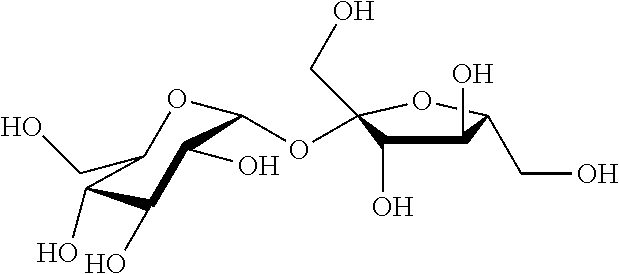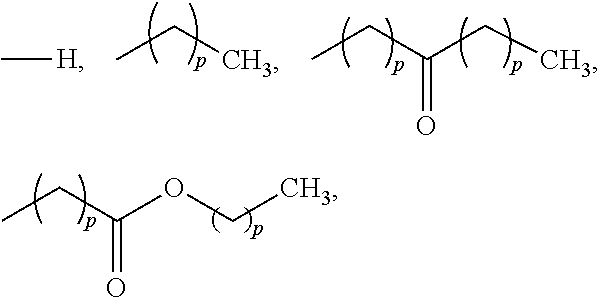Fabric softener composition
a technology of fabric softener and composition, which is applied in the direction of detergent compositions, organic detergent compounding agents, detergent perfumes, etc., can solve the problems of poor phase stability, poor softening performance, and poor viscosity stability, and achieves less viscosity loss, good softening performance, and improved phase stability and viscosity stability
- Summary
- Abstract
- Description
- Claims
- Application Information
AI Technical Summary
Benefits of technology
Problems solved by technology
Method used
Image
Examples
examples 1-4
c Softener Compositions
[0115]The liquid fabric softener compositions of examples 1-4 were prepared as described below. Water, chelant, HCl, formic acid were mixed together in a plastic beaker with a blade mixer. This aqueous solution was heated up in 1 liter plastic bottle in an oven at 65° C. The fabric softener active (Diethyloxyester dimethyl ammonium chloride—DEEDMAC) was heated up in an oven at 85° C. The aqueous solution was mixed with a rushton mixer in a baffled 2 liter tank at a temperature of 63-64° C. The fabric softener active directly coming from the oven was injected with a syringe into the hot water. The obtained dispersion was cooled down by letting it rest in a room at 21° C. The additional ingredients were added to the dispersion using a high shear mixer at 8,000 RPM for 15 seconds. The added structurant is either Chitosan (448877 Sigma Aldrich) or a conventional structurant.
[0116]In comparative examples 1 and 2, no CaCl2) was added and Perfume A was added.
[0117]In...
PUM
| Property | Measurement | Unit |
|---|---|---|
| dynamic yield stress | aaaaa | aaaaa |
| viscosities | aaaaa | aaaaa |
| viscosities | aaaaa | aaaaa |
Abstract
Description
Claims
Application Information
 Login to View More
Login to View More - R&D
- Intellectual Property
- Life Sciences
- Materials
- Tech Scout
- Unparalleled Data Quality
- Higher Quality Content
- 60% Fewer Hallucinations
Browse by: Latest US Patents, China's latest patents, Technical Efficacy Thesaurus, Application Domain, Technology Topic, Popular Technical Reports.
© 2025 PatSnap. All rights reserved.Legal|Privacy policy|Modern Slavery Act Transparency Statement|Sitemap|About US| Contact US: help@patsnap.com



